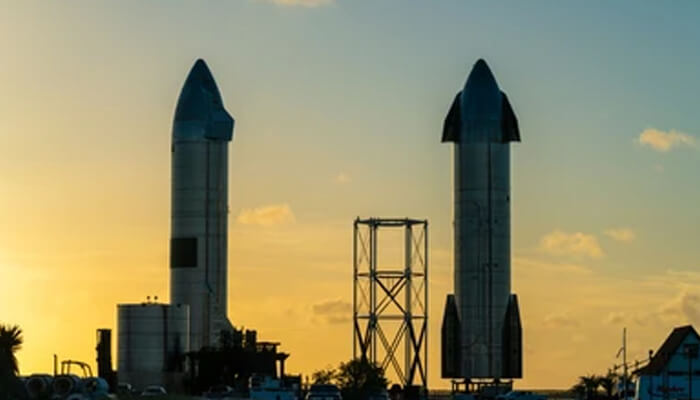Elon Musk, a tech tycoon, is getting ready to launch SpaceX’s massive stainless steel rocket Starship for a test flight, probably on Monday, with the intention of carrying people to the space exploration mission after it is successful.
The director of MIT’s space propulsion laboratory, Paulo Lozano, was quoted by NPR as saying, “It’s a very complex machine; it has so many different parts.”
The biggest space rocket ever constructed will be successful if each engine operates effectively.
The US Federal Aviation Administration (FAA) approved SpaceX’s request for a test flight on Friday. According to the FAA, “After a comprehensive license evaluation process, the FAA determined SpaceX met all safety, environmental, policy, payload, airspace integration, and financial responsibility requirements.”
A year ago, Musk declared when facing Starship, “The Sun will eventually expand and extinguish all life. It is crucial that we evolve into a multi-planet species in the long run.
Musk, who is also the CEO of Twitter and Tesla, claims that the Starship will function as a multi-planetary vehicle, enabling astronauts and space agencies to transport their cargo at a reasonable price. He also thinks that travelers will be sent to Mars aboard his ship.
In addition to space exploration, the corporation has other business interests. For instance, Starship might launch a significant number of “Starlink” satellites, which are crucial to SpaceX’s future plans and provide internet access.
According to Tim Farrar, the head of TMF Associates, a telecom consulting company, Starship would enable the network to expand quickly.
Although it claims to be extraordinary, SpaceX acknowledged that the initial flight might be dangerous.
Spacecraft are designed to fly.
Given how important weight is to spaceships, the 400-foot-tall starship is constructed of stainless steel.
Musk stated in 2021 that while SpaceX first considered using innovative, lightweight composites for the Starship, he soon discovered that steel was more affordable, readily available, and—most importantly—extremely durable.
It could store cryogenic rocket fuel and withstand the intense heat of re-entry more effectively than other materials, according to Musk.
I’m a great fan of stainless steel,” the CEO of SpaceX joked. I should rent a room or something; stainless steel.
In contrast to other space rockets, SpaceX chose methane as its fuel type. According to Lozano, hydrogen is the fuel of choice for the majority of powerful rockets since it is both lightweight and extremely effective.
Methane may have been chosen because it is cheaper to generate and easier to handle than hydrogen. It is also present on Mars.
This suggests that the ship would be fueled by obtaining methane from the atmosphere of the red planet.
The future plan, according to Lozano, is to utilize the methane that is present on planets like Mars.
The spacecraft is propelled by six extremely powerful engines known as Raptors. 33 engines would be operating at once for lifting.
Once more, Lozano said: Choosing to use so many engines is a trade-off. It enables the rocket to generate a significant amount of thrust, which is necessary for takeoff.
He added that it was “actually quite difficult” to have so many rocket engines blazing at once. That’s going to be one of the toughest obstacles, in my opinion.
The many engines being used by space rocket is not new. The Soviet Union constructed the massive N1 rocket in the 1960s with 30n engines for a lunar mission.
The problem is that if one of these engines blew up, the entire rocket would be destroyed.
This caused the four Soviet prototypes to explode, and as a result, they gave up the mission.
The American Saturn V rocket, on the other hand, utilized five huge engines that allowed the astronauts to touch down on the moon.
Instead of carrying an interplanetary mission, SpaceX’s ship will be used to launch satellites for its internet service Starlink, a significant source of cash for the corporation.
According to Tim Farrar, they need additional capacity in order to keep expanding their subscriber base, which will necessitate using bigger and more satellites.
Many satellites that are far larger and heavier can be launched from starships.
“If they can get Starship going, that will clearly help a lot,” said Farrar.



